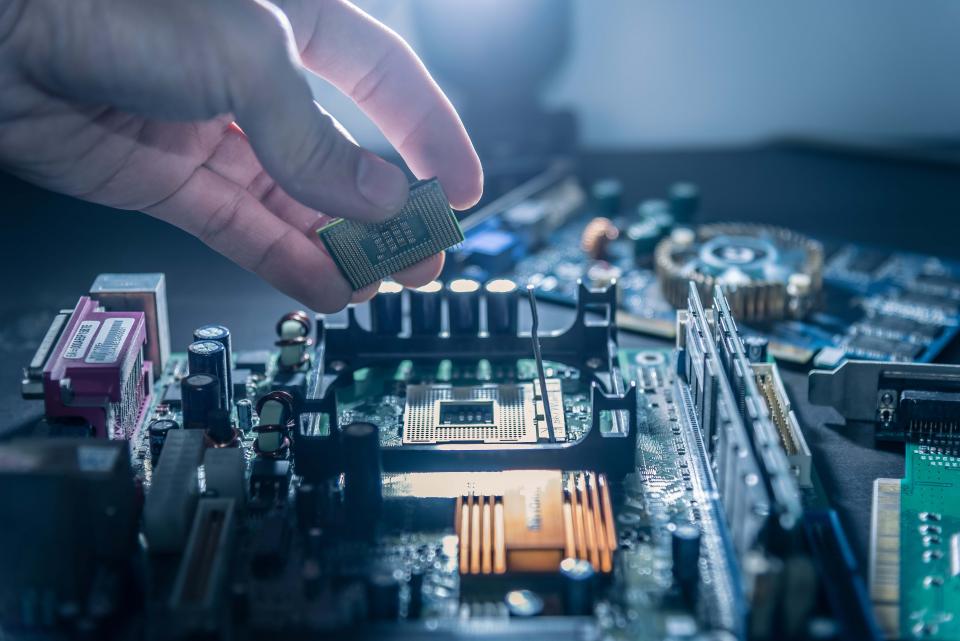As explained later, digital signals can only take one of two values at any one point. Analog signals, however, can take any value within a range. In modern electronics, many traditionally analog circuits are being replaced with digital ICs for various reasons:
· Reduced cost:
· Digital ICs can be programmed, meaning many different analog circuits can each be replaced with the same IC, reducing cost. For example, the same DSP chip might replace many different analog filters.
· Digital ICs can be easily expanded to put multiple functions on the same chip. For example, a DSP chip replacing multiple analog filters at the same time.
· Digital ICs can be reprogrammed without modifying the circuit, simplifying prototyping and field upgrades.
· Increased versatility:
· A digital IC can have its settings changed arbitrarily while it is being operated, these settings can even be changed by software. The equivalent in an analog circuit might require expensive and complicated switching techniques.
· Numeric precision: once a signal is converted to digital data, distortion and circuit noise are no longer a significant issue. A cheap modern watch driven by a digital circuit (such as a quartz oscillator and a counter) is more precise than any analog or mechanical clock.
· Ease of storage: digital data, once recorded, does not degrade as easily as analog data.
Digital circuits are also becoming more prevalent where there are no analog analogues, such as computers. Although analogue computers exist, their utility is severely limited by comparison.
Analog circuits are still more suitable for many functions. One important category is interfaces. Digital circuits are usually inferior to analog circuits for receiving and transmitting signals.
· A common digital interface, the differential line, needs an analog circuit to function well. The receiver must filter out common mode interference by computing the analog difference between the two lines. Most digital interfaces are designed as analog, only a few legacy interfaces (which have poor performance) use entirely digital circuits.
· Many radio signals are simply too high frequency to work with existing digital circuits. Radio modulators, demodulators, mixers, transmitters, and receivers are still analog. Some signals are even too high frequency for transistor circuits of any kind to amplify efficiently, such as microwave signals, which are still transmitted using vacuum tubes.
· Signals must be conditioned before conversion to digital to avoid aliasing: analog filters remove unwanted parts of signals.
· Many devices, such as monitors, require analog control. Even LCD monitors require analog circuits, although they need not be as sophisticated as CRT analog circuits.
· Audio equipment requires analog circuits. Speakers must be driven by analog signals, microphones produce analog signals. Signal of a microphone must be conditioned before conversion to digital, this usually entails sophisticated analog circuits such as preamplifiers, compressors, and filters.


